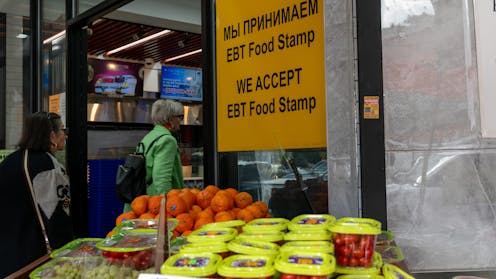A significant legislative change signed into law by President Donald Trump on July 4, 2025, is set to alter the Supplemental Nutrition Assistance Program (SNAP), known widely as food stamps. The changes aim to reduce federal spending by an estimated $186 billion through 2034 by transferring more of the program’s costs to states. This shift is poised to result in fewer Americans receiving food assistance, as the program currently aids approximately 42 million people.
Impact on State Budgets and Eligibility
The Congressional Budget Office projects that around 3 million people might lose their SNAP benefits due to new work requirements and stricter documentation processes. This legislation will also compel states to bear a larger portion of SNAP’s costs, which totaled over $100 billion in 2024. As a result, states may impose additional restrictions on who can receive food assistance, influenced by their own financial constraints.
Historically, SNAP was designed to be universally accessible to low-income individuals, regardless of specific circumstances. However, the new policy expands work requirements to adults up to age 64 and parents of children aged 14 or over, tightening eligibility. While exemptions exist for certain groups, such as Native Americans and Native Alaskans, others like veterans and young adults exiting foster care will not be exempt under the new law.
Adjustments in Administrative Practices
To ensure accountability, states will now face financial penalties if their payment error rates exceed certain thresholds. Starting in the 2028 fiscal year, states with error rates between 6-8% will cover 5% of benefit costs, escalating to 15% for error rates over 10%. Currently, the national average error rate stands at 10.93%, with Alaska reporting the highest rate at nearly 25%.
While the federal government has historically covered the entirety of SNAP benefits, these changes will require states to handle a significant portion of costs for the first time. This transition aims to improve program administration but may lead states to increase bureaucratic hurdles, making it harder for eligible individuals to access needed assistance.
Critics argue that shifting costs to states could exacerbate funding challenges and lead to decreased support for vulnerable populations. Although the law intends to maintain national standards for benefit levels, states might struggle to balance their budgets, potentially affecting the availability of SNAP benefits.
As this legislative shift unfolds, the ability of states to adapt without compromising food security for low-income Americans remains a pressing concern. The law marks a pivotal change in how SNAP is funded and administered, prompting debates about the future of social safety nets in the United States.





























































